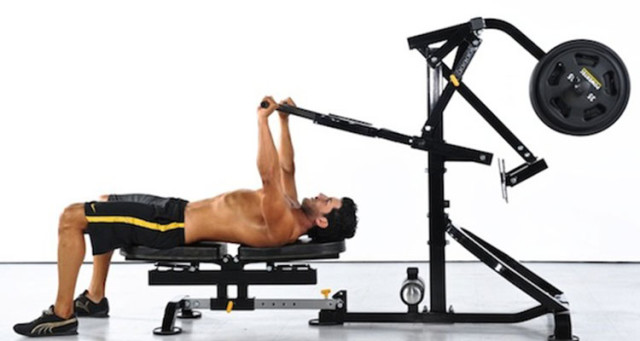The first questions that a beginner who goes to the gym instructor poses in front of a machine with weights are typically: How many lifts (or movements) consecutive I do with this tool? And for how many times? The more precise you even dare to ask how much time they have to recover between one and the other, and so you think you have explained everything you need to know about a training session at a given weight machine.
The load (ie kg lifted or moved) is generally determined based on the presumed ability of the aspirant visitor to the weight room, often without any relation to the first two parameters namely the repetitions and sets. Since the weight training that interests us is not directed to the practice of body building, but it is viewed in the context of Healthy people who want to integrate exercises with aerobic activities to improve overall strength, elasticity and flexibility, before you define the number of repetitions and sets, it is necessary to set a goal you want to achieve. or what aspect you want to train between the following :
- The drag force : the force that the muscle must be applied to overcome the fatigue resulting from prolonged exercise.
- The maximal strength : the maximum force that the muscle can develop with a lifting test (or a limited number of tests). It is often also referred to as the maximum load if you refer to a specific exercise in the gym.
- The force rapid or fast : the maximum force that the muscle can develop to counteract a load in a limited period of time. Referring to the time so that more force you should speak of power that can develop a force per unit time.
- The muscle hypertrophy : there is no reference to the type of force that the muscle must generate, but its effect on the physique of the athlete, or you want to maximize the increase in muscle volume. Muscle volume is connected to the force developed, because the higher the cross-section of the muscle, the muscle fibers are more available to perform the effort. The report muscle hypertrophy = greater muscle strength is not always true, because in addition to having available to the muscle fibers, the human body must also know how to recruit, and this is influenced by other factors such as the efficiency of the cardiorespiratory capacity coordination, etc.. This should give pause to those seeking to maximize muscle hypertrophy only thinking of getting out the maximum performance possible.
Healthy With a view of the work of strengthening in the gym, you can skip the last point, because the research muscle hypertrophy, typical body builder, is far from our purpose. We can identify three types of training, each of which corresponds to a type of force that you want to train and, consequently, to a scheme of a repetitions-number of series-interval between the different series.
Please note that in order to define a training plan should be defined for each gesture (ie, for every machine in the gym or exercising with weights) the following variables :
- Repetition : is the single act of weight lifting or athletic movement that stresses the muscle or muscle district. Generally, in the gym each repetition muscle or muscles moving or lifting a weight (load).
- Series : the number of consecutive repetitions. The series can be slow or fast, or the act done slowly, slowly, or quickly, imposing to adhere to a higher pace.
- Recovery : the time that elapses between a series and the next.
So, on a board of a gym, you may find a typical workout of 3 sets of 12 repetitions of 25 kg with three minutes of recovery. It is crucial to remember that :
- The maximal strength training with weight loads high (near 90% of maximum), execution speed is slow and steady and few repetitions of gesture (2-4). In this case also the serial number must be kept low, because the increase of the degree of training makes sense to increase the load (instead of the serial number).
- The speed strength training with exercises to medium load (50-70% of maximum) with a few sets and a maximum of 10-12 repetitions at a constant speed and fast pace. The higher the degree of training decreases the recovery and / or increase the load.
- The resisting force trains with many repetitions (more than 15), medium loads (less than 50% of the ceiling), moderate speed and little recovery (up to a minute). The higher the degree of training, typically increase the number of repetitions.
- The muscle hypertrophy increases with medium to high loads (70-80% of maximum) and a mean number of repetitions (up to 6-10).
As you can see from this diagram, you do not give precise numbers because the load, number of repetitions, and serial number are dependent on the initial conditions of the athlete. For those who practice endurance sports, of course it makes sense to train the resisting force, while for those who practice the disciplines in which it is important to the athletic and powerful explosive, such as sprinting, volleyball, jumping, etc.,
It makes sense to train strength fast. From a Healthy, maximal strength and muscle, hypertrophy are much less interesting unless you want to make up for a loss of muscle mass due to an injury and / or immobilization for a surgery or a fracture.











